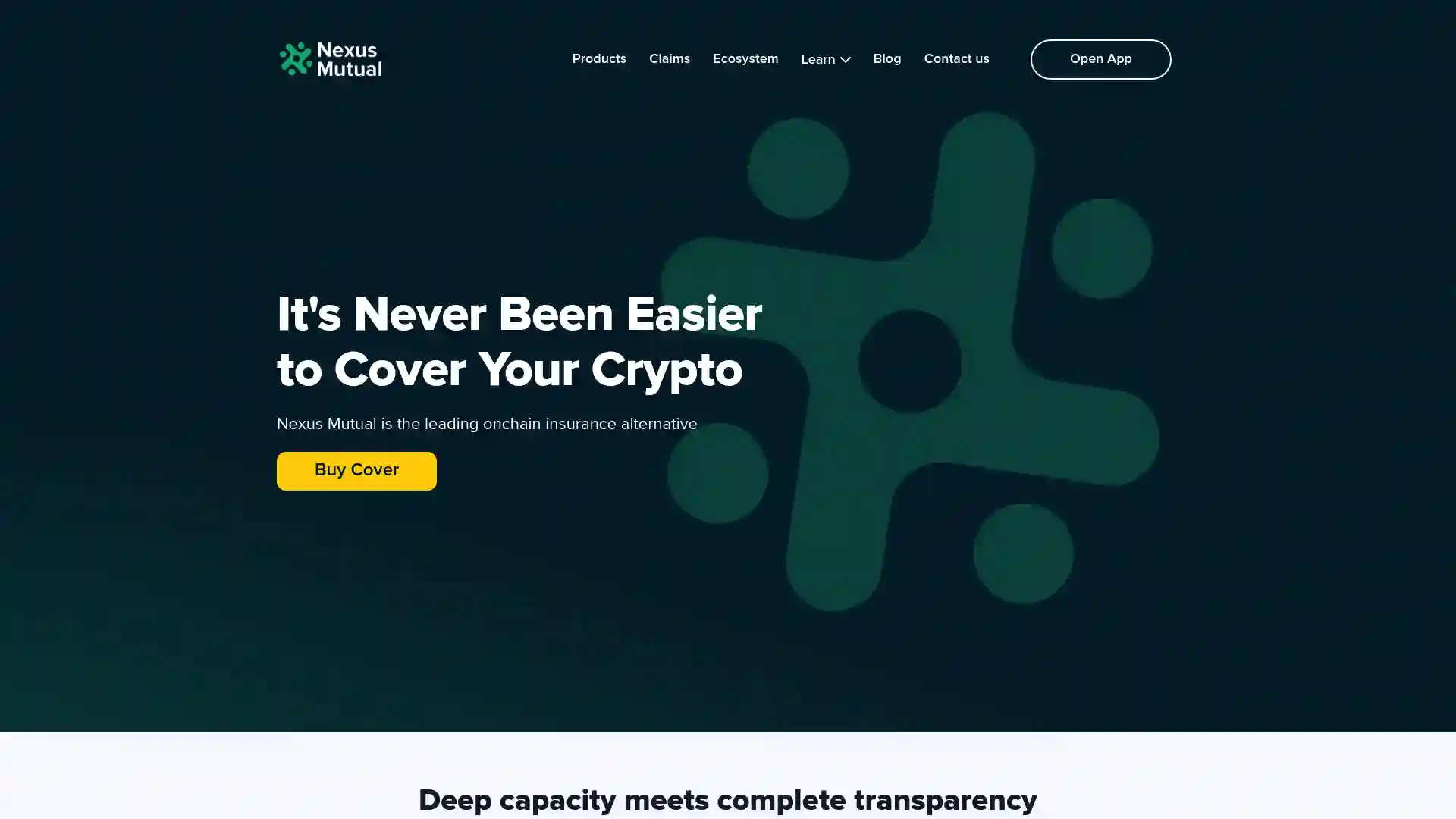Nexus Mutual (NXM)
Nexus Mutual, launched in 2019, is a decentralized insurance protocol developed on the Ethereum blockchain. It provides users with insurance coverage for smart contracts against potential hacks, commonly known as covers. In February 2021, Nexus Mutual raised over $2.7 million for its foundation treasury. This not-for-profit umbrella organization is responsible for selling NXM tokens to fund the protocol's core development, with Collider Ventures leading the contribution.
Overview

| Ticker | NXM |
| Category | Decentralized Finance (DeFi) |
| Website | https://nexusmutual.io/ |
| @NexusMutual | |
| Contract Addresses | |
|---|---|
| ethereum | 0xd7...3b Copied! Copied! |
Nexus Mutual operates using a risk-sharing pool, enabling individuals to purchase insurance cover or contribute capital to the pool for future rewards. Members can contribute Ether (ETH) to the pool in exchange for NXM, the protocol's native token. In January 2021, Nexus Mutual expanded its insurance offerings to include decentralized exchanges and notable cryptocurrency exchanges such as Coinbase, Binance, Kraken, and Gemini. The centralized exchange cover compensates users if an exchange is hacked, resulting in a loss of more than 10% of funds, or if withdrawals are halted for over 90 days.
NXM token
The NXM token provides holders with membership rights and the ability to engage in the ecosystem through claims assessment, risk assessment, and governance. The token model utilizes a bonding curve to determine the price of NXM, influenced by the amount of capital the mutual holds and the capital required to meet claims within a certain probability. This model allows tokens to be purchased at variable prices based on available capital and necessary payouts. Members also share in any excess capital beyond what is needed for potential claims. Nexus Mutual did not conduct a traditional ICO and does not plan to list on secondary exchanges.
Nexus Community Fund
In December 2020, Nexus Mutual held a community vote on establishing a fund by minting new NXM tokens, resulting in an increased supply. The community supported the proposal, initially planning to mint 100,000 NXM but ultimately deciding on a budget of 250,000 NXM. The fund's multisig stewards have the authority to allocate up to 250,000 NXM for various purposes, including additional staking rewards, community grants, project development, or marketing expenses. Roxana Danila, the CTO at Nexus Mutual, serves as the first steward of the multisig wallet, alongside other council members from the Nexus Mutual community and investors.
Funding
In February 2021, Nexus Mutual secured a $2.7 million contribution to its foundation treasury to support the protocol's core development. The funding round was led by Collider Ventures, with participation from 1confirmation, Blockchain Capital, VersionOne, Dialectic, 1kx, and several angel investors. By February 16, 2021, Nexus Mutual had sold over $872 million in active covers and paid $14.5 million in premiums to its members. Prior to this, the Nexus foundation raised $1.4 million from an NXM token issuance in 2018.
Team
- Hugh Karp - Founder and Board Member
- Ricky Tan - Business Development
- Roxana Danila - Engineering
- Anatol Prisacaru - Engineering
- Dragos Horodnic - Engineering
- Dan Octavian - Engineering
- Kayleigh Petrie - Marketing, Communications and Engagement
Advisors
- Hugh Karp - Founder, Nexus Mutual
- Reinis Melbardis - Insurance Expert
- Graeme Thurgood - Mutual Expert
- Roxana Danila - Technical Expert
- Nick Munoz-McDonald - Security Expert
- Steve Barker - Founder and CEO, SwapForex
- Evan van Ness - Founder of WeekInEthereum.com
Partners
- Solidified
- Incentivai
- London Crypto Services
- GovBlocks
